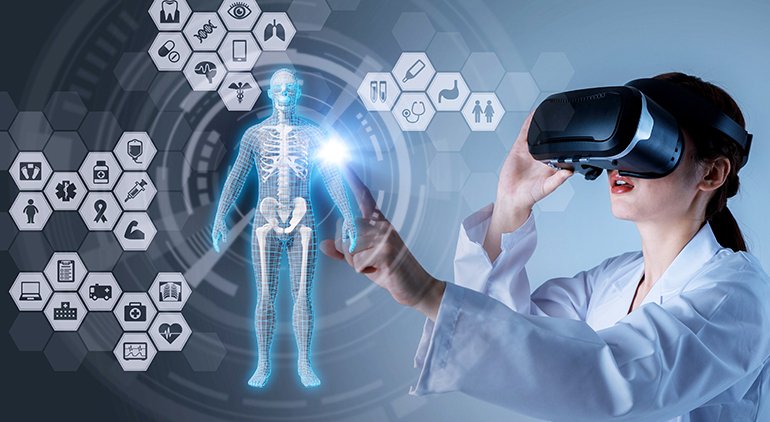
Revolutionizing Medical Training: Augmented Reality Unleashed
In the ever-evolving landscape of medical education, augmented reality (AR) is emerging as a transformative force, ushering in a new era of immersive and effective training for healthcare professionals.
A New Dimension in Learning
Augmented reality brings a new dimension to medical training by overlaying digital information onto the real-world environment. This technology enhances the learning experience, allowing students to interact with three-dimensional anatomical models, medical simulations, and procedural guides in real-time.
Immersive Anatomy Lessons
One of the remarkable applications of augmented reality in medical training is its ability to provide immersive anatomy lessons. Rather than relying solely on textbooks or two-dimensional images, students can now explore detailed 3D models of the human body. AR allows them to dissect virtual cadavers, gaining a deeper understanding of anatomy and spatial relationships.
Simulated Medical Procedures
Augmented reality simulates medical procedures in a realistic and risk-free environment. From surgical techniques to complex diagnostic procedures, students can practice and refine their skills using AR simulations. This hands-on experience bridges the gap between theory and practice, preparing future healthcare professionals for the challenges they may encounter in real-world scenarios.
Enhanced Visualization in Surgery
In surgical training, augmented reality provides surgeons with enhanced visualization during procedures. AR overlays critical information, such as patient vitals or 3D reconstructions of internal structures, directly onto the surgeon’s field of view. This real-time data integration contributes to precision and efficiency in surgery.
Remote Collaboration and Consultation
The integration of augmented reality in medical training extends beyond individual learning. Students can engage in remote collaboration and consultation sessions, connecting with peers and mentors regardless of geographical distances. This collaborative aspect fosters a sense of community and enables knowledge-sharing among healthcare professionals.
AR in Patient Education
Augmented reality isn’t limited to medical professionals; it also plays a crucial role in patient education. Healthcare providers can use AR to visually explain medical conditions, treatment options, and procedures to patients. This interactive approach enhances patient understanding and empowers them to make informed decisions about their healthcare.
Exploring Augmented Reality in Medical Training
For a deeper dive into the transformative impact of augmented reality in medical education, visit Augmented Reality in Medical Training. This platform serves as a valuable resource, offering insights into the latest developments, applications, and future trends in the realm of AR-enhanced medical training.
Addressing Challenges in AR Implementation
While the benefits of augmented reality in medical training are evident, challenges in implementation exist. The integration of AR technologies requires infrastructure, resources, and a comprehensive curriculum redesign. Overcoming these challenges involves collaboration between educational institutions, technology developers, and healthcare practitioners to ensure seamless integration and optimal learning outcomes.
The Future of Medical Education
As technology continues to advance, augmented reality holds immense potential for shaping the future of medical education. The immersive and interactive nature of AR not only enhances the learning experience but also contributes to better-prepared healthcare professionals entering the workforce. The ongoing evolution of augmented reality in medical training is a testament to the commitment to excellence in healthcare education.
In Conclusion: Augmented Reality’s Educational Revolution
In conclusion, the integration of augmented reality in medical training marks a significant step towards revolutionizing how healthcare professionals are educated. The immersive experiences, hands-on simulations, and collaborative opportunities afforded by AR contribute to a more comprehensive and effective learning journey. As we navigate the evolving landscape of medical education, augmented reality stands as a beacon, illuminating the path towards a future where learning is dynamic, engaging, and deeply impactful.
